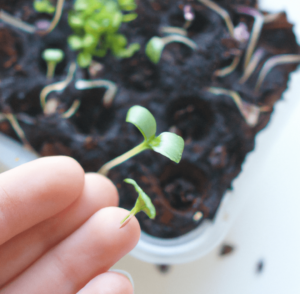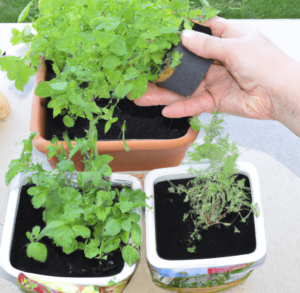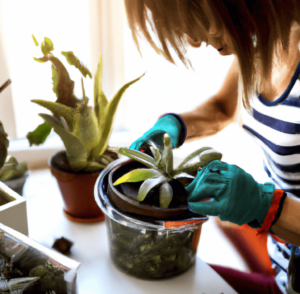When it comes to home gardening, one question that often arises is: what is the average size of a home garden in the United States? It turns out that the answer depends on several factors, including the location of the home, the type of garden, and the purpose of the garden. In this article, we will explore the average home garden size in the United States, including both indoor and outdoor spaces, and discuss the various factors that can influence garden size.
When discussing the average home garden size in the United States, it’s important to note that we are primarily talking about residential properties. While commercial properties and public spaces may also have gardens, the focus of this article is on gardens that are associated with single-family homes or apartments.
In terms of square footage, the average home garden size in the United States can vary widely. Some gardens may be as small as a few square feet, while others may be several thousand square feet in size. One factor that can influence garden size is the presence of a lawn. Many homes in the United States have a lawn, which can take up a significant amount of space in the garden. Lawns may be used for recreational activities, such as playing sports or lounging, and they may also be used to create a sense of order and aesthetic appeal in the garden.
While the presence of a lawn can affect the overall size of a home garden, it is not the only factor to consider. The purpose of the garden, as well as the location of the home, can also play a role in determining garden size. For example, a home in a urban area may have a smaller garden compared to a home in a rural area, due to space constraints. Similarly, a home that is used primarily for entertaining may have a larger garden, as it may include areas for seating and dining.
In conclusion, the average home garden size in the United States can vary widely, depending on a variety of factors such as location, purpose, and the presence of a lawn. While it is difficult to pinpoint an exact size, it is clear that home gardens play an important role in providing outdoor space for relaxation, recreation, and enjoyment for many Americans.

Plant Care and Gardening
Gardening is the practice of growing and cultivating plants, such as vegetables, flowers, and herbs, in a planned and organized manner. Gardening can be done on a small scale, such as in a backyard or balcony, or on a larger scale, such as in a community garden or farm. Gardening can be a fun and rewarding hobby, as it allows you to connect with nature, grow your own food, and beautify your surroundings.
Vegetable gardening is a type of gardening that focuses on growing edible plants, such as tomatoes, peppers, beans, and lettuce. Vegetable gardening can provide a fresh and nutritious source of produce for your household, and can be a great way to save money on groceries.
To succeed at gardening, it’s important to have a good understanding of the needs of the plants you are growing. This includes factors such as the type of soil, amount of sunlight, and proper watering techniques. It’s also important to plan out your garden by choosing the right location and deciding which plants to grow.
When it comes to feeding your plants, the type and amount of fertilizers you use will depend on the specific needs of the plants and the soil conditions. It’s important to follow the recommended guidelines for fertilizing, as over-fertilizing can lead to excess foliage growth at the expense of fruit production and can also harm the environment.
Overall, gardening can be a rewarding and enjoyable hobby, whether you’re growing a few herbs on your balcony or planning a large vegetable garden. It’s a great way to connect with nature, grow your own food, and beautify your surroundings.
Vegetable Gardening
Growing vegetables can be a rewarding and enjoyable hobby for individuals and families. Not only does it provide a source of fresh and nutritious produce, but it can also be a great way to spend time outdoors and connect with nature. When growing vegetables, it is important to select the right types of plants for your climate and soil conditions, and to properly prepare the soil before planting.
Proper care and maintenance of your vegetable garden is also crucial for successful harvests. This includes providing the plants with adequate sunlight, water, and feed (such as compost or fertilizers). Regular weeding and pest control can also help to ensure that your vegetables are healthy and free from damage.
Harvesting vegetables at their peak of ripeness can greatly enhance their flavor and nutritional value. Many vegetables can be preserved through methods such as freezing or canning, allowing you to enjoy the fruits of your labor all year round.
Overall, vegetable gardening can be a fun and rewarding activity for people of all ages, and can provide a valuable source of nourishment for families.
Homes in the United States
The size of a home in the United States is often measured in square feet, which refers to the area of the interior of the home. A home with a larger square footage may have more rooms and be more expensive, while a smaller home may have a lower price point.
Many homes in the United States also have a lawn, which is a piece of land surrounding the home that is covered in grass. The size of the lawn can vary, with some homes having a small patch of grass and others having a large yard. Lawns can require maintenance, such as mowing and watering, and may add to the overall price of a home.
The price of a home in the United States can vary significantly depending on the location and other factors such as the size of the home and the condition of the property. Homes in urban areas with a high demand for housing may be more expensive than homes in rural areas with a lower demand. The overall cost of living in an area can also affect the price of homes.

Lawn Maintenance
Lawns come in various sizes, with the average size of a residential lawn being around 6,000 square feet. The size of a lawn can vary greatly, with some lawns covering just a few hundred square feet while others stretch across several acres. In most cases, lawns are found in the backyard of a home and are used for recreational purposes such as playing, entertaining, or relaxing.
Proper lawn maintenance is crucial in order to keep a lawn healthy and attractive. One important aspect of lawn care is fertilizing, which helps to nourish the grass and encourage growth. Fertilizers come in many different forms, including liquid, granular, and slow-release, and can be applied using a variety of methods such as broadcasting, spot-treating, or injecting. It is important to follow the manufacturer’s instructions when fertilizing a lawn and to be mindful of any local regulations regarding fertilizer use.
In addition to fertilizing, there are many other tasks that are involved in maintaining a healthy lawn. These can include watering, mowing, aerating, and controlling weeds. By performing these tasks on a regular basis, homeowners can keep their yards looking lush and green all year round.
Backyard Basics
In California and many other parts of the United States, the backyard is an important part of the home. It can be a place to relax, entertain guests, and enjoy the outdoors. One common feature of a backyard is a lawn, which is a grassy area that is typically maintained by regularly mowing, watering, and fertilizing. A well-manicured lawn can add to the aesthetic appeal of a home and provide a safe place for children and pets to play. However, maintaining a lawn can be time-consuming and require resources such as water, which can be scarce in drought-prone areas like California. As a result, some homeowners may opt for alternative ground cover options that are more drought-resistant and require less maintenance.
Bottom Line: The Average Home Size in the United States is Relative According to the Available Space, Resources, and Time
The average home garden size in the United States is relatively small, ranging from 100 to 1,000 square feet. This size range is suitable for growing a variety of vegetables, herbs, and flowers, and can be easily managed by most homeowners. However, the actual size of a home garden may vary depending on factors such as the available space, the resources and time available for gardening, and the needs and preferences of the homeowner. Some homeowners may choose to have larger gardens, while others may opt for smaller, more specialized gardens.
If you’re interested in what is the average home garden size in the US, you may also be interested in what is the average home garden size globally and what is the average home garden size in Europe.







